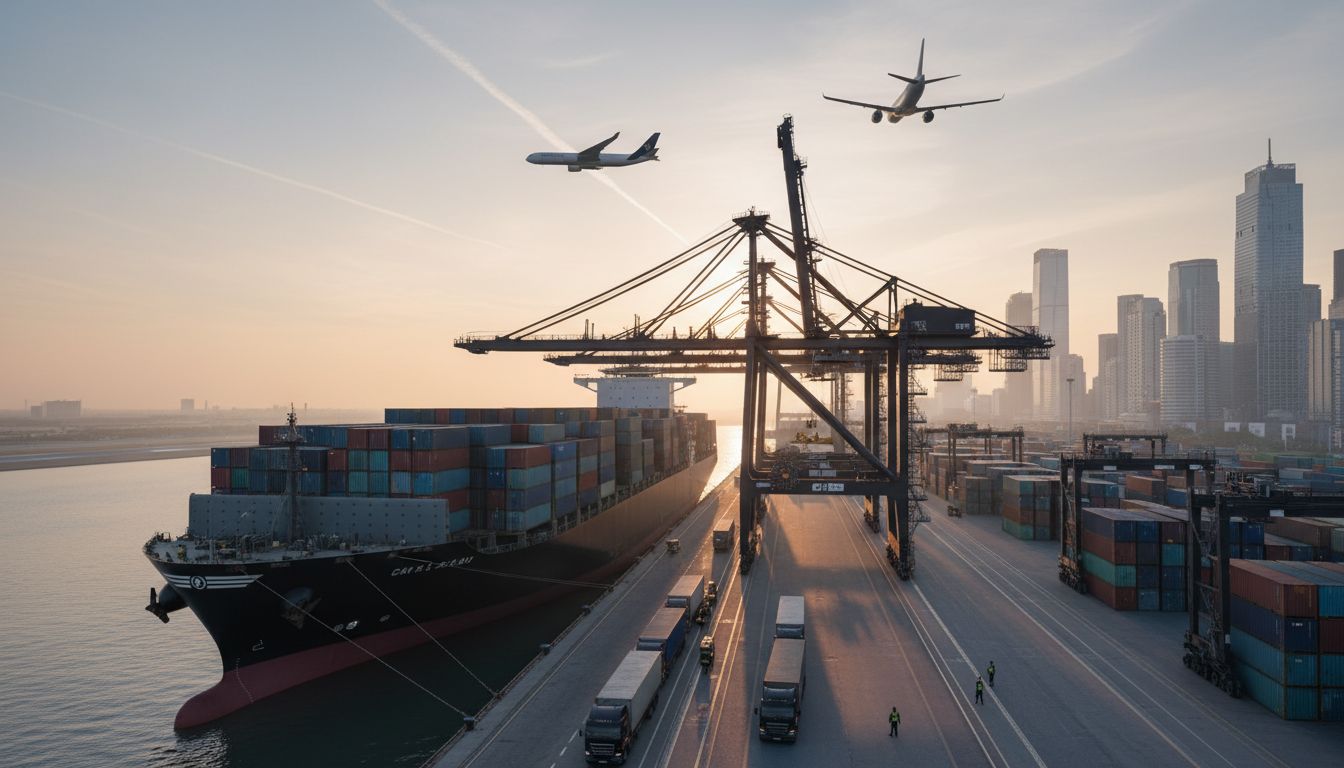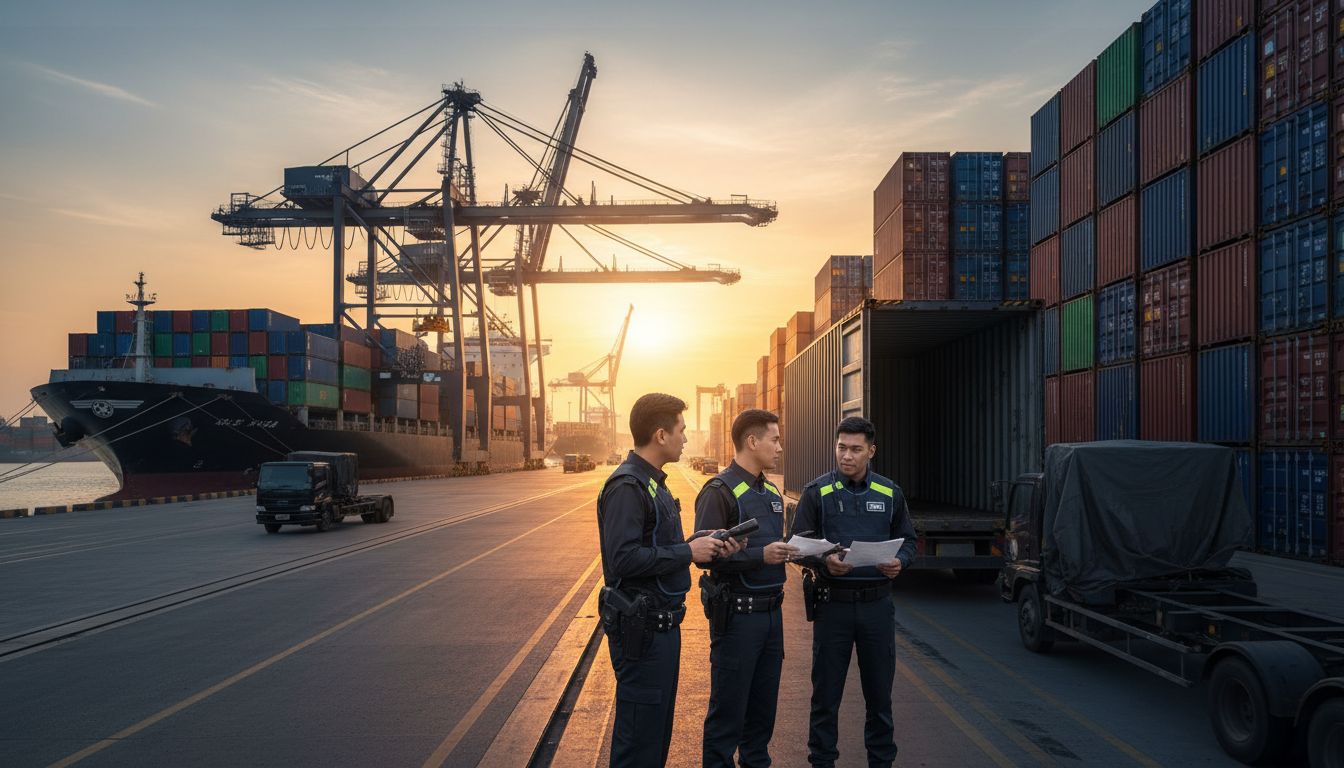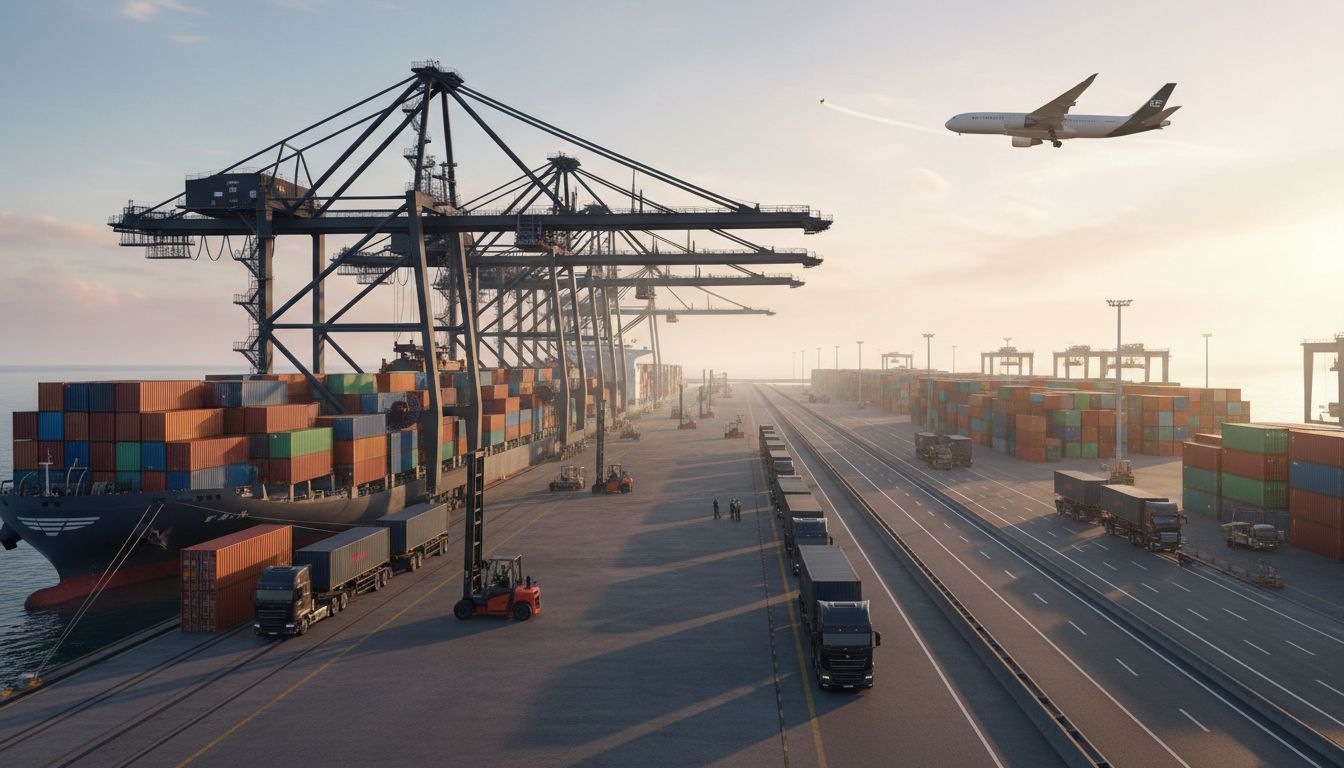International freight shipping is more than just moving boxes across borders. Companies that truly master it see dramatic results and businesses with optimized freight strategies can save up to 30 percent on shipping costs each year. You might assume that paperwork or customs cause most problems and headaches. The real snag for many businesses happens long before cargo leaves the warehouse and it all starts with an accurate assessment of your shipping needs. Few realize this first step sets the entire shipment up for success or failure.
Table of Contents
- Step 1: Assess Your Shipping Needs And Requirements
- Step 2: Research And Select The Right Freight Forwarder
- Step 3: Prepare Necessary Documentation And Compliance
- Step 4: Confirm Shipment Details And Logistics
- Step 5: Track Shipment Progress And Address Issues
- Step 6: Verify Delivery And Evaluate Performance
Quick Summary
| Key Point | Explanation |
|---|---|
| 1. Assess your shipping needs first | Thoroughly evaluate cargo characteristics, volume, and handling needs to minimize costs and optimize efficiency. |
| 2. Select a reliable freight forwarder | Research potential partners for industry expertise, technology, and transparent pricing to support your logistics goals. |
| 3. Prepare accurate shipping documentation | Create a comprehensive documentation package to ensure compliance and facilitate smooth customs clearance. |
| 4. Confirm all shipment details | Meticulously verify logistics elements, including pickup dates and handling specifications, to ensure a seamless shipping process. |
| 5. Evaluate performance after delivery | Conduct a thorough review of each shipment to identify successes and areas for improvement in future logistics strategies. |
Step 1: Assess Your Shipping Needs and Requirements
Successful international freight shipping begins with a comprehensive assessment of your specific shipping requirements. This crucial first step determines the foundation of your entire logistics strategy. Identifying your precise shipping needs allows you to develop a targeted approach that minimizes costs and maximizes efficiency.
Start by thoroughly examining the nature of your goods, their total volume, weight, and specific handling requirements. Different products demand different shipping methods. A fragile electronics component, for instance, will require vastly different packaging and transportation protocols compared to industrial machinery or perishable goods. Consider the specific characteristics of your cargo – its dimensional weight, potential temperature sensitivities, and any special certifications or handling instructions that might impact your shipping strategy.
Your assessment should also include a detailed evaluation of your destination markets and shipping frequencies. Analyze your historical shipping data to understand typical shipment volumes, peak seasons, and potential demand fluctuations. Learn more about reducing shipping costs by understanding your precise shipping patterns and negotiating rates based on consistent volume.
Key elements to document during your assessment include:
- Total annual shipping volume
- Typical cargo dimensions and weight ranges
- Specific handling requirements for different product categories
- Frequency of international shipments
- Targeted destination countries and regional shipping challenges
Remember that a thorough initial assessment reduces unexpected complications later in your shipping process. By investing time in this foundational step, you create a strategic framework that supports efficient, cost-effective international trade. Your goal is to develop a clear, comprehensive understanding of your shipping ecosystem that will guide every subsequent logistics decision.
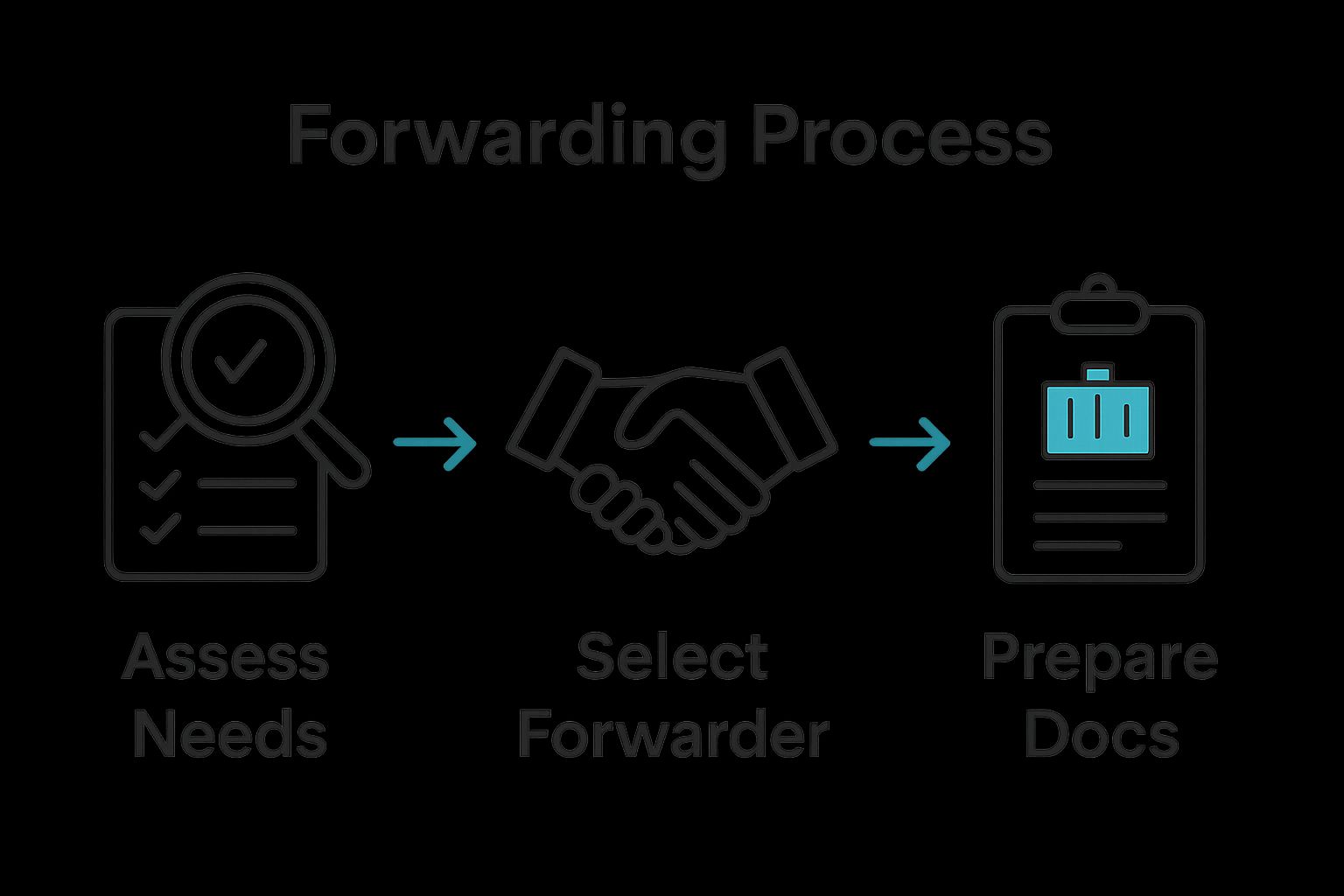
Successful completion of this step means you can confidently articulate your shipping needs, understand your cargo’s unique requirements, and have a documented baseline for your international freight shipping strategy.
Step 2: Research and Select the Right Freight Forwarder
Selecting the right freight forwarder is a critical decision that can make or break your international shipping strategy. This step transforms your shipping requirements into a tangible logistics solution that connects your business with global markets. The freight forwarder you choose will serve as your primary partner in navigating the complex world of international trade logistics.
Begin your research by developing a comprehensive evaluation framework. Look beyond basic service offerings and dive deep into each potential freight forwarder’s expertise, network, and track record. Learn more about understanding cargo freight forwarders to ensure you make an informed decision. Investigate their experience with your specific industry, the regions you plan to ship to, and the types of goods you transport.
Examine each potential freight forwarder through multiple lenses. Financial stability is paramount – request recent financial statements and assess their ability to handle your shipping volume consistently. Check their licensing and certifications, ensuring they possess the necessary credentials for international shipping. Technology integration matters significantly in modern logistics, so evaluate their tracking systems, communication platforms, and digital capabilities.
Key criteria for selecting your ideal freight forwarder include:
- Comprehensive global network and proven international shipping experience
- Transparent pricing structures with no hidden fees
- Advanced tracking and communication technologies
- Industry-specific expertise matching your cargo requirements
- Strong relationships with multiple shipping carriers and logistics providers
Dont just rely on written materials and websites. Request references from businesses similar to yours and conduct direct interviews with potential freight forwarders. Ask pointed questions about their problem-solving approaches, typical response times, and how they handle unexpected shipping challenges.
Successful completion of this step means you have identified a freight forwarder who not only meets your current shipping needs but can also scale and adapt as your international trade operations evolve. Your chosen partner should feel like an extension of your own logistics team, committed to your business success.
Step 3: Prepare Necessary Documentation and Compliance
Documentation and compliance represent the backbone of successful international freight shipping, transforming your logistics strategy from theoretical planning to practical execution. Precise and comprehensive documentation is not just a bureaucratic requirement but a critical component that ensures smooth customs clearance and prevents costly shipping delays.
Begin by creating a systematic documentation workflow that covers every aspect of your international shipment. Explore our guide to mastering export documentation to understand the nuanced requirements of international trade. Each document must be meticulously prepared, accurate, and aligned with both your origin country’s export regulations and your destination country’s import requirements.
Your documentation package will typically include several essential components. Commercial invoices must detail the exact nature of goods, their value, and classification codes. Certificates of origin validate the manufacturing location and can impact potential trade duties. Packing lists provide granular details about shipment contents, while specialized permits might be required for regulated or sensitive goods. Pay extraordinary attention to harmonized system codes, as incorrect classification can result in significant customs penalties.
Essential documentation for international shipping includes:
- Commercial Invoice with complete product descriptions
- Certificate of Origin
- Detailed Packing List
- Bill of Lading or Airway Bill
- Export License (if applicable)
- Customs Declaration Forms
- Insurance Certificates
Understand that compliance extends beyond paperwork. Different countries have varying import regulations, product standards, and customs protocols. Some commodities require additional certifications or face strict import restrictions. Research each destination market thoroughly, consulting with local trade authorities or your freight forwarder to confirm all regulatory requirements.
Successful completion of this step means you have a comprehensive, accurate documentation package that anticipates potential customs challenges. Your meticulously prepared documents serve as your passport through international shipping networks, minimizing risks and positioning your shipment for efficient, trouble-free transit.
Step 4: Confirm Shipment Details and Logistics
Confirming shipment details and logistics represents the critical bridge between planning and execution in international freight shipping. This step transforms your carefully prepared documentation and strategic planning into a concrete, actionable shipping plan. Your goal is to meticulously verify every logistical element that will guide your cargo from origin to destination.
Explore our comprehensive packing list essentials to ensure you have considered every critical aspect of your shipment preparation. Begin by conducting a comprehensive review of your shipping instructions with your freight forwarder. Verify precise pickup dates, transportation modes, anticipated transit times, and specific handling requirements for your cargo. Each detail matters – from container size and type to temperature control specifications and potential transhipment points.
Develop a robust communication protocol with all involved parties. Confirm contact information for shipping coordinators, customs brokers, and logistics managers at each stage of the journey. Create a detailed communication matrix that outlines who will be responsible for updates, problem resolution, and emergency communications. This proactive approach minimizes potential miscommunications and ensures rapid response to any unexpected challenges during transit.
Key verification points for your shipment include:
- Precise cargo measurements and weight
- Confirmed transportation routing
- Temperature and handling requirements
- Insurance coverage details
- Estimated time of arrival
- Customs clearance preparation
- Cargo tracking methodology
Pay special attention to potential variability in international shipping. Different regions have unique logistical challenges, from port congestion to seasonal weather impacts. Build flexibility into your shipping plan by understanding alternative routing options and potential contingencies. Your freight forwarder can provide invaluable insights into regional specifics that might affect your shipment.
Successful completion of this step means you have a comprehensive, verified shipping plan that anticipates potential challenges and provides clear guidance for every stage of your international cargo movement. Your meticulously confirmed logistics strategy transforms complex international shipping into a streamlined, predictable process.
Below is a checklist table to help ensure all critical verification points in your shipment’s logistics are addressed before executing your international freight plan.
| Verification Point | Description | Responsible Party |
|---|---|---|
| Cargo Measurements & Weight | Verify dimensions and total weight | Shipper |
| Transportation Routing | Confirm planned route and transportation mode | Freight Forwarder |
| Temperature/Handling Needs | Check requirements for sensitive or special cargo | Shipper/Forwarder |
| Insurance Coverage | Review details of shipment insurance | Shipper/Forwarder |
| Estimated Arrival Time | Validate projected delivery date | Freight Forwarder |
| Customs Preparation | Ensure documentation for clearance is ready | Shipper/Customs Broker |
| Tracking System Set Up | Establish methodology for shipment monitoring | Freight Forwarder |
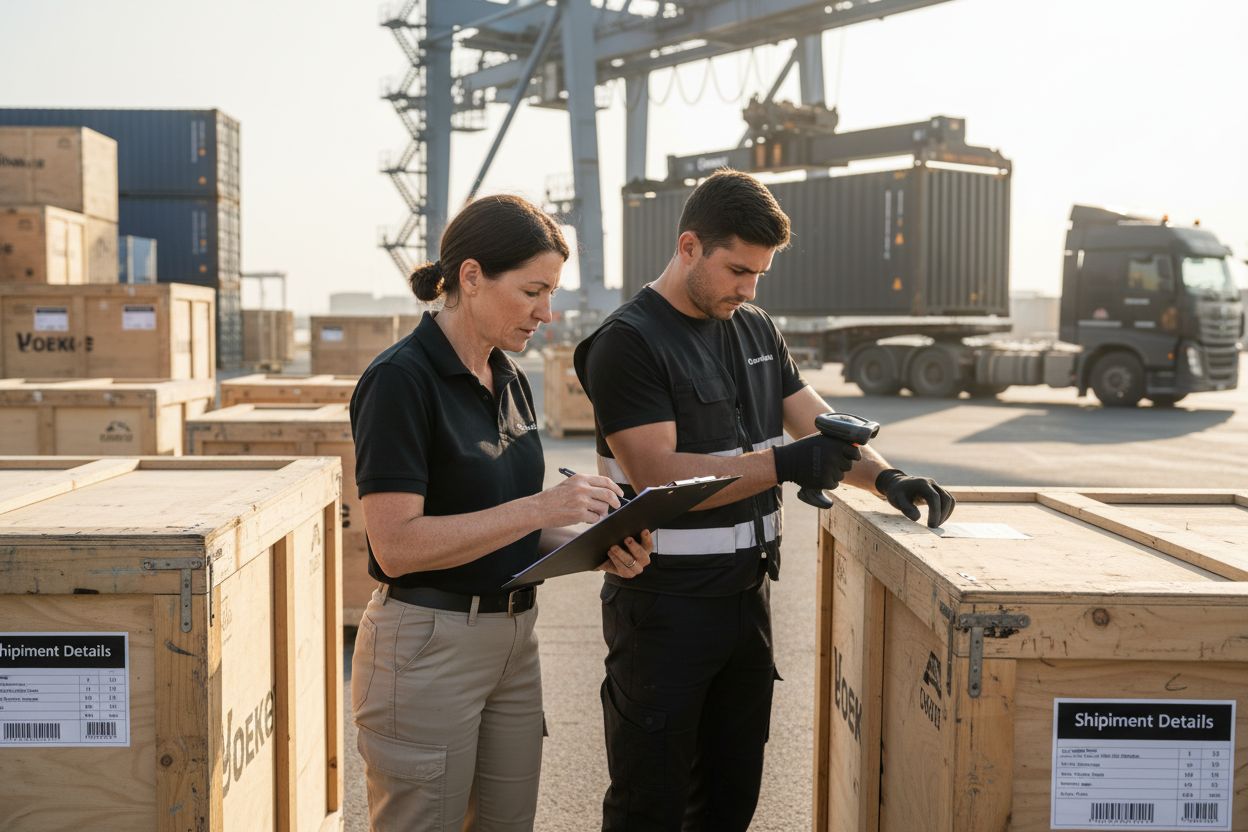
Step 5: Track Shipment Progress and Address Issues
Tracking your international shipment represents the critical final phase of your logistics strategy, transforming your planning into real-time operational management. Effective tracking is not merely about monitoring location but about proactively managing potential disruptions and maintaining complete visibility throughout your cargo’s journey.
Learn how to use global order tracking effectively to maximize your shipment oversight. Establish a comprehensive tracking protocol that goes beyond simple location updates. Utilize advanced tracking technologies provided by your freight forwarder, which often include real-time GPS monitoring, electronic data interchange (EDI) updates, and comprehensive logistics platforms that offer granular insights into your shipment’s status.
Develop a systematic approach to monitoring your shipment’s progress. Set up automated notifications that alert you to key milestones such as customs clearance, port transitions, and estimated delivery times. Create a dedicated communication channel with your logistics partner to ensure rapid information exchange. This proactive approach allows you to quickly identify and address potential issues before they escalate into significant problems that could delay your shipment.
Critical tracking elements to monitor include:
- Real-time geographical location
- Customs clearance status
- Temperature and condition monitoring
- Anticipated vs. actual transit times
- Potential routing changes
- Documentation compliance updates
- Potential security or regulatory flags
Prepare a comprehensive contingency plan for potential shipping disruptions. Understand the specific challenges that might impact your route, such as seasonal weather patterns, geopolitical tensions, or port congestion. Maintain open communication channels with your freight forwarder to quickly develop alternative strategies if unexpected obstacles arise. Your ability to adapt quickly can mean the difference between a delayed shipment and a smoothly executed international logistics operation.
Successful completion of this step means you have established a robust, proactive tracking system that provides complete visibility into your shipment’s journey. Your strategic approach transforms international shipping from a complex challenge into a manageable, transparent process that keeps your business moving forward efficiently.
Step 6: Verify Delivery and Evaluate Performance
The final stage of international freight shipping transforms your entire logistics journey into a strategic learning opportunity. Verification and performance evaluation are not mere administrative tasks but critical processes that directly influence your future shipping success and operational efficiency.
Immediately upon delivery, conduct a comprehensive inspection of your shipment. Compare the received goods against your original shipping documentation, checking for any discrepancies in quantity, condition, and specification. Explore our guide to mastering shipping documentation to understand the nuanced details you should verify during this crucial stage.
Develop a systematic approach to delivery verification that goes beyond simple visual inspection. Document every aspect of the delivery process, including the condition of packaging, potential transit damages, and compliance with original shipping specifications. Create a detailed receiving report that serves not just as a record, but as a valuable tool for future logistics optimization. This documentation becomes your benchmark for comparing future shipments and identifying areas of improvement in your international freight strategy.
Key performance evaluation elements to assess include:
- Total shipment transit time
- Accuracy of initial cost estimates
- Condition of goods upon arrival
- Customs clearance efficiency
- Communication quality during transit
- Alignment with original shipping requirements
- Total landed cost
Engage in a constructive review process with your freight forwarder. Schedule a post-shipment debriefing to discuss the entire logistics journey, exploring both successful elements and potential areas for improvement. This collaborative approach transforms each shipment into a learning experience, allowing you to continuously refine your international shipping strategy.
Successful completion of this step means you have not just received your shipment, but transformed the entire process into a strategic asset. Your meticulous verification and evaluation approach turns international freight shipping from a transactional process into a continuous improvement cycle that enhances your global trade capabilities.
To help you evaluate and improve your international shipping process, here is a table summarizing key delivery verification and performance evaluation elements mentioned in this step.
| Evaluation Element | What to Assess | Why It Matters |
|---|---|---|
| Shipment Transit Time | Actual vs. planned shipping duration | Identifies efficiency or delay issues |
| Cost Estimate Accuracy | Compare estimated and actual costs | Helps refine future budgeting |
| Condition of Goods | Inspect for damage/discrepancies | Prevents disputes and ensures product safety |
| Customs Clearance Speed | Note time required for clearance | Highlights potential regulatory bottlenecks |
| Communication Quality | Evaluate update frequency and clarity | Ensures smooth coordination |
| Alignment to Requirements | Check shipment matches original specs | Confirms fulfillment as per contract |
| Total Landed Cost | Calculate all shipping-related expenses | Aids in comprehensive cost analysis |
Turn International Shipping Challenges Into Seamless Success
You have just explored the vital steps needed for mastering international freight shipping, from accurate needs assessment to real-time tracking and final delivery checks. But you might be wondering how to consistently execute these steps when faced with complex documentation, changing customs regulations, and the need for transparent shipment visibility. These challenges can slow your growth and put your entire trade operation at risk if not handled by experts.
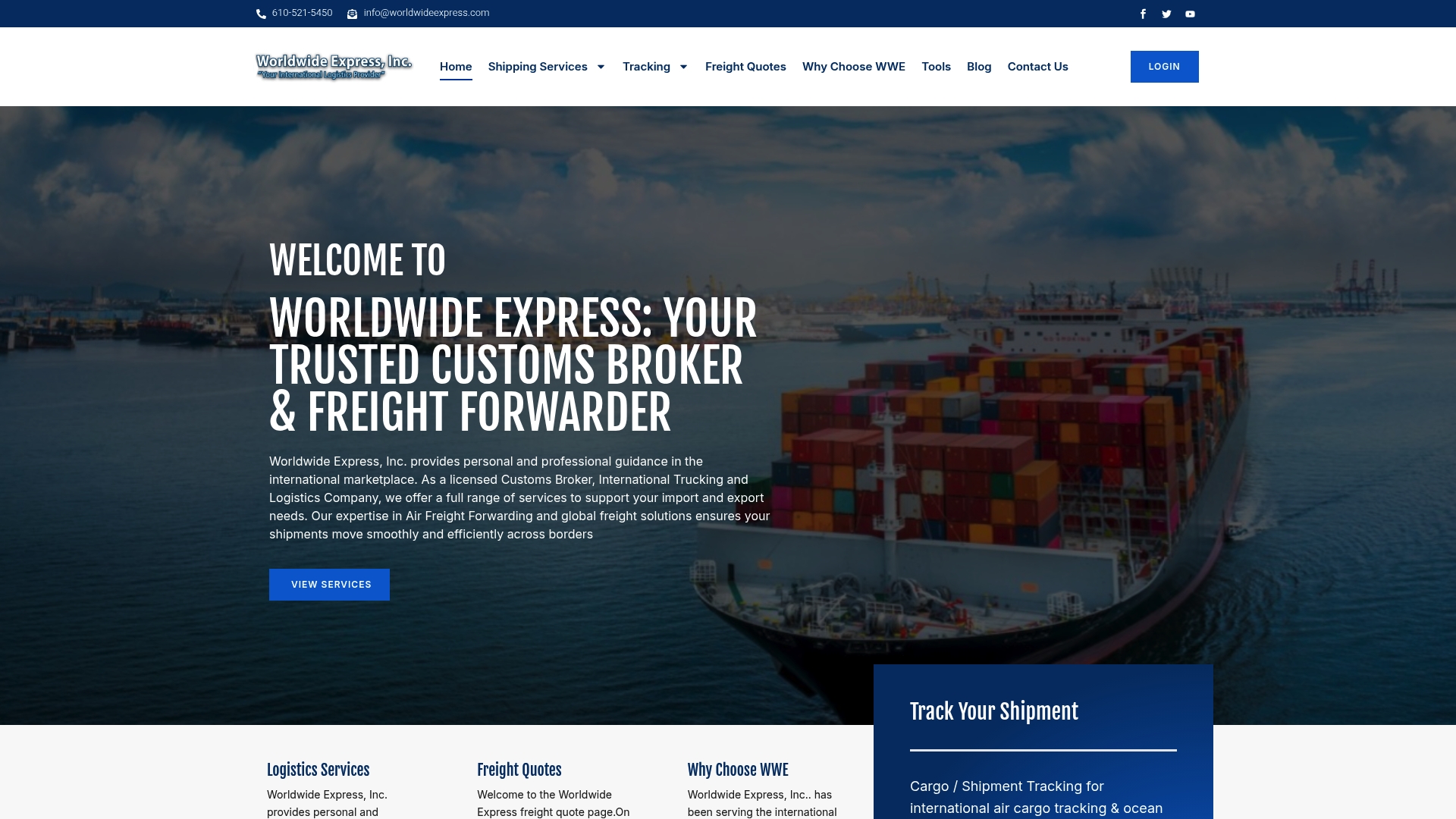
At Worldwide Express, Inc., we help you eliminate these worries by offering end-to-end logistics solutions that address every pain point mentioned in your journey. Our team specializes in international freight forwarding, customs brokerage, global shipment tracking, and compliance management, so you can ship with confidence and avoid costly errors. See how our expertise and full-service solutions can optimize your supply chain and simplify your global operations now. Take the first step by learning more about our services at our website or browse our resources to get started today.
Frequently Asked Questions
What are the key factors to consider when assessing my shipping needs for international freight?
To effectively assess your shipping needs, consider the nature of your goods, total volume and weight, handling requirements, target destination markets, and historical shipping patterns. Documenting these elements helps create a comprehensive logistics strategy.
How can I choose the right freight forwarder for my international shipments?
When selecting a freight forwarder, evaluate their industry expertise, network strength, financial stability, transparent pricing, and technology capabilities. Conduct thorough research and seek references to ensure they align with your specific shipping requirements.
What types of documentation are required for international freight shipping?
Essential documentation typically includes a commercial invoice, certificate of origin, packing list, bill of lading or airway bill, export license (if applicable), customs declaration forms, and insurance certificates. Accurate documentation is vital for customs clearance.
How can I effectively track my international shipment?
To track your shipment effectively, establish a system that utilizes real-time tracking technologies provided by your freight forwarder. Set up automated notifications for key milestones and maintain open communication with your logistics partner for timely updates and issue resolution.
Recommended
- 8 Packing List Essentials for International Trade Success – Worldwide Express, Inc.
- 7 Key Tips for Mastering Post Office International Shipping – Worldwide Express, Inc.
- Uncategorized – Worldwide Express, Inc.
- 7 Essential Tips for FedEx International Shipping Success – Worldwide Express, Inc.
- 7 Typen internationale transportmethoden voor bedrijven – Send with Parcel International
- Internationale verzending starten: Stap-voor-stap gids voor succesvolle verzending – Send with Parcel International



